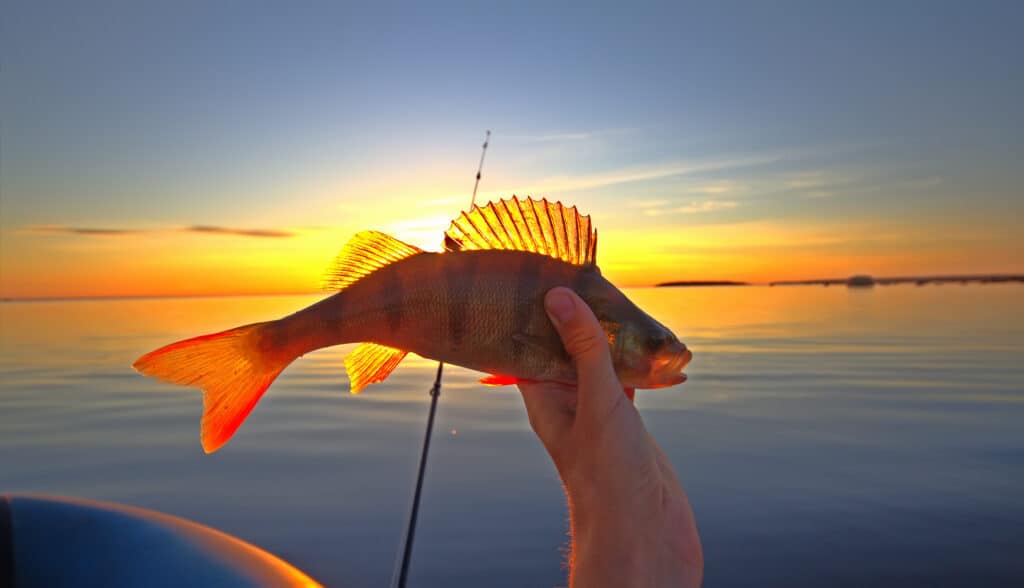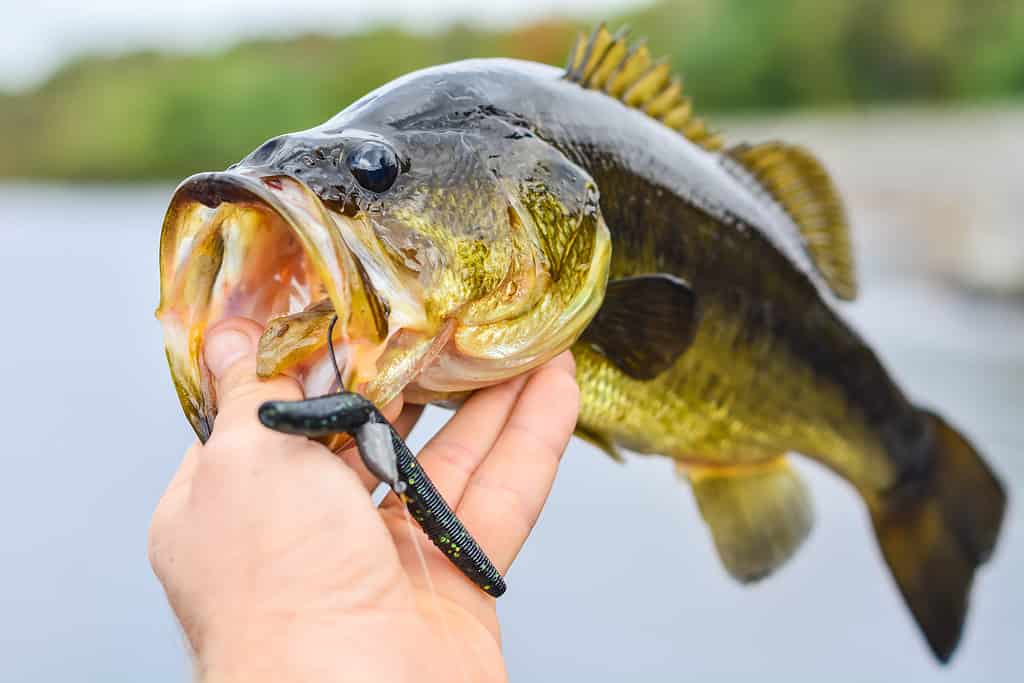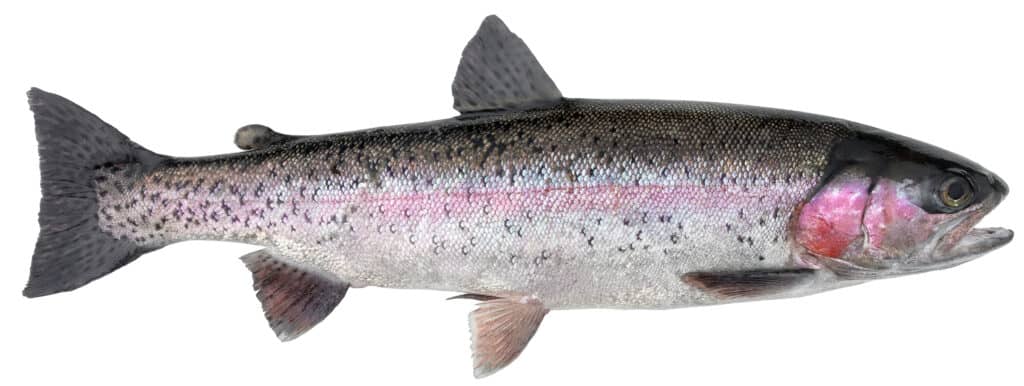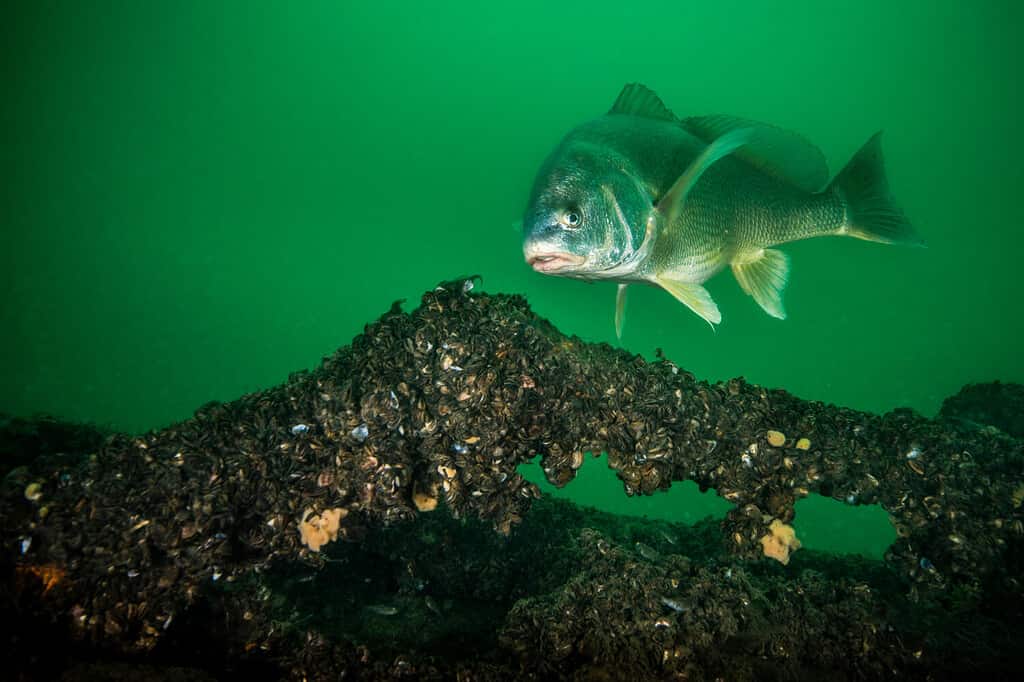Lake Erie, one of the majestic Great Lakes, boasts a thriving underwater world that beckons both fish enthusiasts and anglers. With its vast expanse of shimmering waters, Lake Erie is renowned for its abundance of fish species, making it a prime destination for fishing enthusiasts seeking thrilling adventures and a bountiful catch.
In this article, we embark on a journey to uncover the remarkable array of fish that call Lake Erie home. From the prized walleye, known for its elusive nature and delectable taste, to the spirited yellow perch, Lake Erie offers an exciting variety of game fish that lure anglers from far and wide. So, grab your fishing gear, prepare to cast your line, and immerse yourself in the captivating world of Lake Erie’s 10 notable fish species!
1. Walleye

Among the most popular game fish in North America are walleye.
©iStock.com/FedBul
Walleye, considered the crown jewel of Lake Erie, is highly sought after by anglers for its elusive nature and delicious taste. They are abundant in Lake Erie, making it a prime destination for walleye fishing. These predatory fish are known for their excellent low-light vision, which allows them to feed actively during dawn and dusk.
To catch walleye in Lake Erie, anglers often employ techniques such as trolling, casting, or jigging. Trolling with crankbaits or worm harnesses at varying depths can be effective, especially near drop-offs and structures where walleye tend to gather. Casting with jigs tipped with minnows or soft plastics can also yield good results. It’s important to experiment with different depths and locations to find the most productive spots.
2. Yellow Perch

Renowned for its exquisite taste and exhilarating fights, yellow perch is a sought-after game fish.
©Maximillian cabinet/Shutterstock.com
Yellow perch is another highly prized game fish in Lake Erie, known for its delicate flavor and thrilling battles when hooked. They are abundant in the lake and provide a rewarding fishing experience. Yellow perch are often found in schools near the lake’s bottom, particularly around structures such as reefs, weed beds, and rocky areas.
Anglers commonly use techniques such as bottom fishing with live bait, such as minnows or worms, or vertical jigging with small jigs tipped with minnows or soft plastics. It’s important to locate schools of yellow perch and adjust your fishing depth accordingly to increase your chances of success.
3. Smallmouth and Largemouth Bass

Largemouth bass can grow over 18 inches long in three years.
©michal dziekonski/iStock / Getty Images Plus via Getty Images
Lake Erie is home to both smallmouth and largemouth bass, offering exciting opportunities for anglers. Smallmouth bass are known for their fighting spirit and acrobatic leaps, while largemouth bass are renowned for their size and strength.
Both species can be found in various areas of Lake Erie, including inlets, bays, and weed beds. Anglers often target them using techniques such as casting with crankbaits, soft plastics, or topwater lures. Fishing near structures like rocks, docks, and submerged vegetation can increase your chances of hooking this bass.
4. Steelhead

Steelhead trout have long, silvery bodies with a pink or red stripe running on their sides.
©Edvard Ellric/Shutterstock.com
Migratory rainbow trout, or steelheads, provide thrilling fishing experiences in Lake Erie’s tributaries. These fish migrate from the lake into the rivers and streams for spawning purposes. Steelheads are known for their powerful runs and acrobatic leaps when hooked.
Anglers often use techniques such as drift fishing with spawn sacs, flies, or brightly colored lures. Fly fishing with streamers or nymphs can also be effective. It’s important to pay attention to water conditions and target areas with deeper pools or riffles where steelheads tend to congregate.
5. Lake Sturgeon

Lake
sturgeon
fishing is both popular and extremely rewarding. These fish can measure up to 6.5 feet!
©Fabien Monteil/Shutterstock.com
Lake sturgeon, once threatened but now making a comeback, is a remarkable species found in Lake Erie. These ancient fish can reach impressive sizes and contribute to the ecological balance of the lake. Lake Sturgeon are primarily bottom feeders, using their elongated snouts to search for food.
Due to their protected status, catching lake sturgeon is strictly regulated, and anglers are encouraged to practice catch-and-release. If you encounter a lake sturgeon while fishing in Lake Erie, it’s important to handle them with care and release them back into the water promptly.
6. Channel Catfish

The channel
catfish
is North America’s most numerous catfish species.
©Alauddin Abbasi/Shutterstock.com
Channel catfish can be found in Lake Erie, although they are not as abundant as some other species. They are known for their scavenging behavior and can be found near the lake’s bottom, particularly in areas with structures such as drop-offs, submerged logs, and rocky areas.
To catch channel catfish in Lake Erie, anglers often use techniques such as bottom fishing with live bait, such as nightcrawlers, chicken liver, or cut bait. Setting up a rig with a sinker and a hook baited with these options can attract channel catfish. Patience is key, as channel catfish tend to be more active during low-light periods or at night.
7. Coho Salmon

These salmon are migratory fish that can be spotted in Lake Erie during spawning season.
©USFWS – Pacific Region / Flickr – License
Coho salmon are not as abundant in Lake Erie as they are in Lake Ontario, but they occasionally make their way into Lake Erie’s tributaries during their spawning season. These migratory fish are known for their powerful runs and acrobatic leaps when hooked.
Anglers targeting coho salmon in Lake Erie often use techniques such as trolling with crankbaits or spoons. The use of brightly colored lures that mimic baitfish can be effective. It’s important to pay attention to water conditions and target areas with deeper pools or riffles where coho salmon tend to congregate during their spawning runs.
8. Common Carp

Common carp have become invasive in Lake Erie.
©Vladimir Wrangel/Shutterstock.com
Originally from Asia and Europe, common carp have become invasive in Lake Erie. They are known for their adaptability and can be found in various areas of the lake. Carp are bottom feeders and often root around in the sediment in search of food.
While carp are not typically targeted by anglers for sport, they can be caught using techniques such as bottom fishing with bait such as corn, dough balls, or boilies. Carp are known for their strength and can provide a challenging fight when hooked.
9. Northern Pike

Lake Erie is home to some fantastic fish including Northern pike.
©Jik jik, CC BY-SA 3.0, via Wikimedia Commons – License
Northern pike were once abundant in Lake Erie but are now primarily limited to the marshes and bays of the Western Basin. These predatory fish are known for their aggressive nature and voracious appetite.
Anglers targeting northern pike in Lake Erie often use techniques such as casting with large spoons, spinnerbaits, or jerk baits. Fishing near structures such as weed beds, submerged logs, or drop-offs can increase the chances of encountering northern pike. It’s important to use wire leaders to prevent pike from cutting the fishing line with their sharp teeth.
10. Freshwater Drum

Drums can be found in Lake Erie.
©RLS Photo/Shutterstock.com
Freshwater drums, also known as sheepshead, are abundant in Lake Erie. They are bottom feeders and are often found near the lake’s bottom, particularly in areas with rocky or sandy bottoms.
Anglers targeting freshwater drums in Lake Erie often use techniques such as bottom fishing with live bait, such as nightcrawlers or crayfish. Freshwater drums have a strong sense of smell, so using bait with a strong scent can be effective. They are known for their hard strikes and powerful fights when hooked.
Remember, fishing regulations and guidelines may vary, so it’s essential to stay informed and adhere to local fishing regulations to ensure the sustainability of these fish populations in Lake Erie.
In Conclusion
The legendary Lake Erie is home to a plethora of incredible fish species that continue to captivate and amaze. With its diverse ecosystem and rich biodiversity, this Great Lake has become a haven for aquatic life. It serves as a testament to the resilience and adaptability of nature, making it a captivating destination for both anglers and nature enthusiasts. As we continue to explore and protect this iconic lake, let us remember the beauty and significance of these amazing fish that call it home!
The photo featured at the top of this post is © Sara Winter/Shutterstock.com
Thank you for reading! Have some feedback for us? Contact the AZ Animals editorial team.







